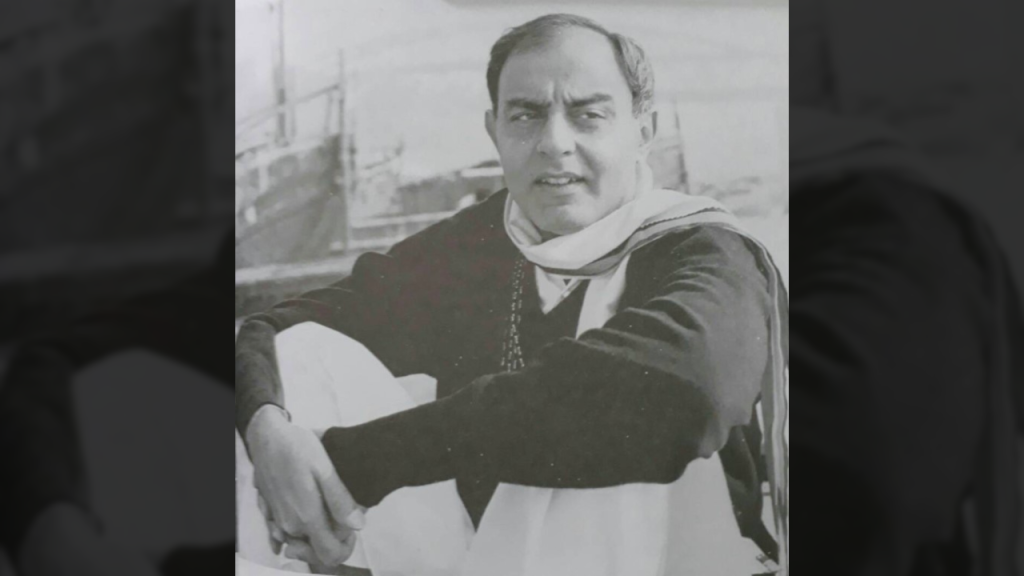Introduction
The name “Martand Singh” stands as a light of rebirth in the world of Indian textiles. Martand Singh, often known as the “Textile Revivalist,” dedicated his life to preserving and rejuvenating the rich tradition of Indian textiles, which were intricately woven into the nation’s cultural fabric. His reputation as a visionary curator, historian, and creative genius has made an everlasting impact on the world of textiles, promoting a newfound respect for India’s unique creativity and workmanship in textile traditions. The Government of India awarded Singh the Padma Bhushan for his contributions to Indian arts and culture. This article will highlight Martand Singh’s journey and efforts to revive the tapestry of rich tradition in Indian textiles.
 Martand Singh in his spiritual home of Varanasi, Image Credit: A.G. Krishna Menon, https://thewire.in/
Martand Singh in his spiritual home of Varanasi, Image Credit: A.G. Krishna Menon, https://thewire.in/
Early Life and Inspirations
Martand Singh, also fondly known as “Mapu,” was born into a royal family in Kapurthala. He attended Doon School in Dehradun and St Stephen’s College in New Delhi. After graduating, he opened a store called ‘Psyche Delhi’ in the Oberoi Hotel, designing leather trousers and capes. He left the store to work with cultural activist Pupul Jayakar at the Handicrafts and Handloom Exports Corporation, who served as cultural advisers to Indira and Rajiv Gandhi. In the 1970s, as advised by his mentor Pupul Jayakar, he visited drought-stricken Rajasthan to re-employ and re-energize craftsmen and weavers, which transformed his approach to Indian textiles. His appreciation of the art form and the dwindling traditions and skills in India fuelled his determination to save centuries-old trades from obscurity. Singh believed textiles encompassed tales, symbolism, and traditions, capturing the essence of Indian culture.
Artistry Rediscovered: The Calico Museum
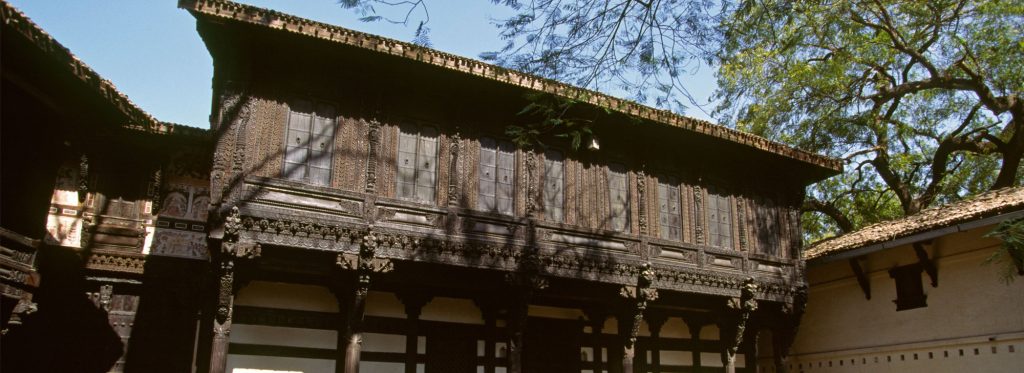 Calico Museum of Textiles, Ahmedabad, Gujrat, https://www.gujarattourism.com/
Calico Museum of Textiles, Ahmedabad, Gujrat, https://www.gujarattourism.com/
The rise of urban artists and designers had transformed India’s rural textile production base, primarily represented by faceless and anonymous “crafts people.” Government support aimed to enable livelihood for these artisans. By the 1970s, the Indian mechanised textile industry had rapidly developed, and mill-made cloth became popular. Calico, a prominent mill in Ahmedabad, founded a museum to house a collection of Indian historical textiles. Martand Singh served as director for almost a decade between the 1970s to 1980s before getting involved in the Vishwakarma interventions.
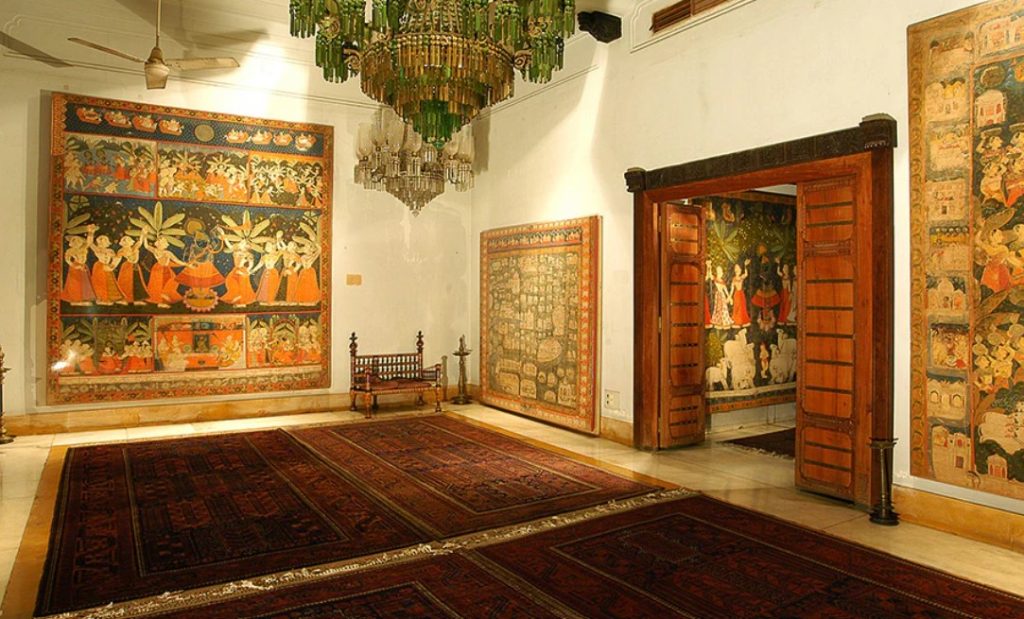 Display chambers at Calico Museum, Ahmedabad, Image Courtesy, Images Courtesy Calico Museum – Sarabhai Foundation, Ahmedabad, https://www.selvedge.org/
Display chambers at Calico Museum, Ahmedabad, Image Courtesy, Images Courtesy Calico Museum – Sarabhai Foundation, Ahmedabad, https://www.selvedge.org/
Singh, the passionate director of the Calico Museum of Textiles, transformed the institution into a sanctuary for textile enthusiasts and experts. His meticulous curation and historical research infused each display with life, bringing stories that spanned generations. His commitment to authenticity and accuracy reflected in the museum’s collection, featuring an array of textile traditions from across India. His ten years as a director under Gira Sarabhai were formative, shaping his future paths and thinking.
Empowering Artisans Beyond the Museum Walls
During colonial rule, trade connections to Africa and Central Asia collapsed, and Mapu played a crucial role in decolonizing the Indian market. His expertise in textiles and aesthetics helped create new materials aided in the production of what had not been created in years due to mill-made materials, regaining the demand for manual weaving. Around this time, Heritage was limited to museums, but Mapu discovered a way to deal with heritage outside of museums, directly on the doorway of the weaver.
 Art critic Richard Bartholomew captured Martand Singh (centre) in a black and white frame at a fabric store in Jaipur in the 1970s, Image Courtesy: The Estate of Richard Bartholomew, https://www.livemint.com/
Art critic Richard Bartholomew captured Martand Singh (centre) in a black and white frame at a fabric store in Jaipur in the 1970s, Image Courtesy: The Estate of Richard Bartholomew, https://www.livemint.com/
He travelled to meet weaving communities, learning from craftspeople, and understanding their hardships. Recognising that the collapse of traditional textile practises was frequently due to economic difficulties, he fought relentlessly to bridge the gap between craftspeople and the modern market. He played a vital role in bringing design resources from government bodies and fostering interaction between weavers, designers, and artists. His efforts, with the support of cultural activist and writer Pupul Jayakar, opened the space of art and design in India and shaped the way forward. Singh used his understanding of finer things to create weaving centres and brought in private individual designers to connect with weavers and organizations. His compassionate approach encouraged artisans, instilling a renewed sense of pride in their craft, and establishing long-term channels for their work to prosper.
The Vishwakarma Exhibitions
The Vishwakarma exhibitions in India were part of a larger trend that focused on Khadi and Swadeshi production and courtly patronage in textiles. During colonial authority, these abilities were retained, while refined versions of brilliance gained encouragement from royal, aristocratic, and affluent merchant elites. The Central Government encouraged modernist-influenced design and architecture, defining handicrafts and arts as “crafts.”
The seven Vishwakarma exhibitions were held in major Indian cities and foreign nations. These exhibitions highlighted India’s different textile traditions and craftsmen’s aesthetic language. The exhibitions had a crucial impact on weavers and artisans back home, bringing in work for weavers and centres. The Vishwakarma exhibitions stimulated innovation and dynamic creative collaborations, bringing new life to traditional textiles in many centres where production was in the last stages. The explorations laid the foundations for developments in the non-governmental and private sectors of fashion and home furnishings, enabling the present ecology of contemporary hand-artisanship. It was indeed a turning point in the history of textiles.
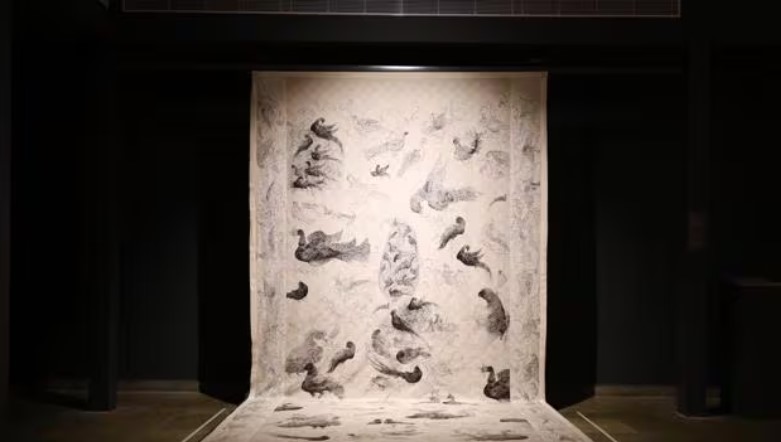 Screen-printed panel with birds in cotton from Tamil Nadu, displayed at “A Search in Five Directions – Textiles from the Vishwakarma Exhibitions (2018),” https://www.hindustantimes.com/
Screen-printed panel with birds in cotton from Tamil Nadu, displayed at “A Search in Five Directions – Textiles from the Vishwakarma Exhibitions (2018),” https://www.hindustantimes.com/
Singh passed away in April 2017, and a commemorative show, “A Search in Five Directions – Textiles from the Vishwakarma Exhibitions (2018),” was exhibited at the National Handicrafts and Handlooms Museum in Delhi in memory of the phenomenal individual, Martand Singh, who breathed a new life into Indian textiles. The exhibition, curated by Rakesh Thakore, Rta Kapur Chishti, and Rahul Jain, was an evocative portrayal of the overwhelming richness and beauty of Indian textiles.
Curating Global Cultural Connections
Martand Singh had a tremendous effect on the textile business since he organised international shows highlighting the splendour of Indian textiles. His curated exhibits flawlessly blended legacy and modernity, demonstrating how old techniques may be applied to new aesthetics. One of his most notable international projects was the exhibition “The Fabric of India” at the Victoria and Albert Museum in London. This landmark exhibition emphasised not just the complexity of Indian textiles, but also their effect on global fashion and design. Singh’s “Vishwakarma exhibitions” were pathbreaking and showcased India’s textile culture on a global platform. He also managed international exhibitions as part of the Festival of India series, including “Costumes of Royal India” (1985) and “Earth and Sky” (1987).
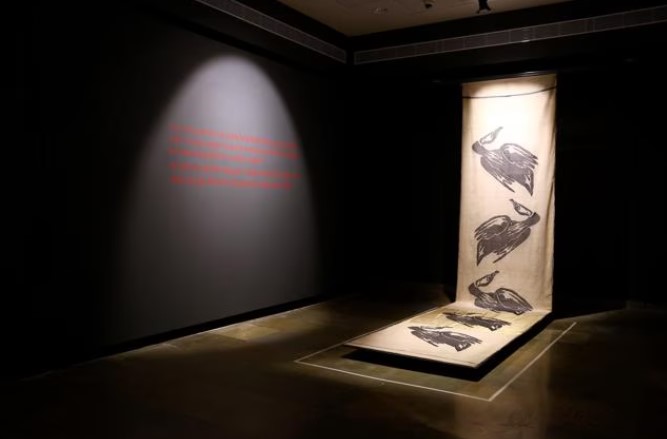 Stunning Jamdani panel from Andhra Pradesh, at “A Search in Five Directions – Textiles from the Vishwakarma Exhibitions (2018),” https://www.hindustantimes.com/
Stunning Jamdani panel from Andhra Pradesh, at “A Search in Five Directions – Textiles from the Vishwakarma Exhibitions (2018),” https://www.hindustantimes.com/
Educational Endeavours: Raising Future Weavers
Education was central to Martand Singh’s purpose. Singh’s workshops and talks inspired a new generation of textile enthusiasts, assuring the survival of old skills while generating inventive adaptations for modern settings. He emphasised the need of education in the preservation of textile traditions. His workshops and lectures provided a forum for young minds to interact with the art of textiles, encouraging creativity while honouring the foundations of tradition.
Singh was a devoted conservationist in addition to envisioning and directing textile manufacturing across India. His documentation of textiles and their origins is remarkable. Singh contributed to the “Saris of India series,” which documents Indian handloom sarees. His efforts resulted in volumes such as “Saris of India: Madhya Pradesh” (1989), “West Bengal and Bihar” (1995), and the comprehensive Saris of “India: Tradition and Beyond” (2010). “Khadi: Fabric of Freedom” (2002), for example, included 108 distinct varieties of hand-spun and handwoven cotton fabric and sarees from nine different states, as well as current fashions. He and Jayakar co-founded the Indian National Trust for Art and Heritage (INTACH), which continues to advocate for art and heritage conservation in India. Mapu’s legacy lives on through his talks and the institutions he founded.
Legacy and Contributions in the Field of Textile Craft
Martand Singh, a prominent figure in India’s textile tradition, served on various trust boards and was involved in restoration initiatives, including the restoration of Chowmahalla Palace in Hyderabad. As the director of the Calico Museum of Textiles, which is one of the greatest archives for textiles in the country, he elevated the museum’s concept as a facility that hosted the greatest and finest, as a destination of excellence. He founded the “Vishwakarma Awards,” which recognizes individuals who go beyond craft as a method of production, elevating it to a greater degree of art and quality.
Martand Singh – Mapu, a Renaissance hero, was a multifaceted figure who recognized the complex interwoven nature of heterogeneous India. He was known for his storytelling, flamboyant sense of humour, and generosity. He was a giver in an increasingly competitive cultural landscape, offering expertise, kindness, contacts, and time. Singh’s dedication to revitalizing and maintaining traditional textiles has left an indelible mark on cultural appreciation and artisanal workmanship. His vision was about relevance and the integration of intellectual knowledge with artistic intuition, is responsible for fostering a conversation between the past and present. Mapu evolved into an exquisite textile expert and aesthete, his “Amar Vastra Kosh” textile trip and “Saris of India” volumes inspired the spectacular “Vishwakarma – Master Weavers” shows, which reinterpreted and elevated Indian textiles to new creative heights.
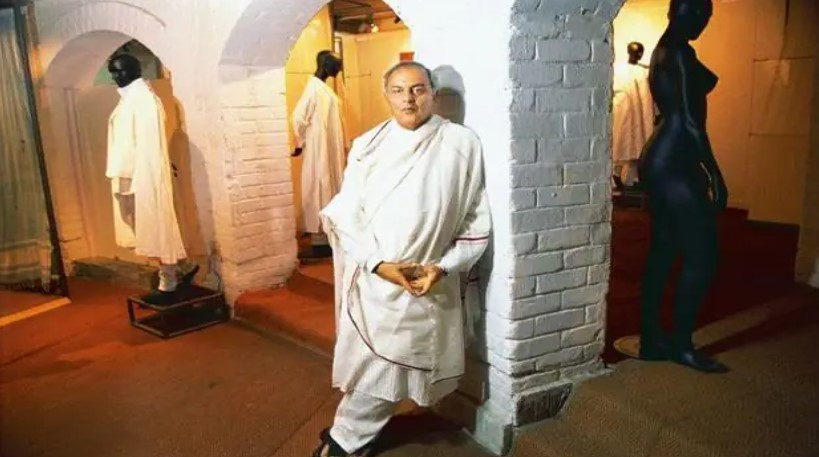 A 2002 photo of Martand Singh, Image Courtesy: India Today, https://www.livemint.com/
A 2002 photo of Martand Singh, Image Courtesy: India Today, https://www.livemint.com/
Conclusion
Martand Singh intended to revitalise textiles and keep them relevant for future generations. He revitalised Weavers Service Centres and brought design to craft communities, transforming the design into a skill and technique for exceptional art. His work exemplifies perseverance and enthusiasm, blending intellectual understanding with artistic sense. His unrelenting commitment to cultural preservation has made him a driving force for makers, designers, and craft enthusiasts. People are inspired by his life’s effort to bridge the gap between heritage and contemporary, preservation and innovation, and the beauty of workmanship. Singh’s legacy endures in a society that is frequently obsessed with the fleeting and innovative, emphasising the need of conserving and cherishing the strands of tradition that determine cultural identity.
References:
- “Martand Singh,” 21st April 2022, MAP Academy Encyclopaedia of Art.
- Manik Sharma, 10th February 2018, “Textile Exhibition: Remembering the life and times of Martand Singh”.
- Avantika Bhuyan, 19th January 2018, “Remembering the legacy of textile revivalist Martand ‘Mapu’ Singh”, Craftsmanship, Architectural Digest.
- Komal Sharma, 12th May 2017, “Martand Singh: The man who gave us Vishwakarma”, MINT.
- Laila Tyabji, 28th April 2017, “The textile man who understood both tradition and technique”, Culture, Wire.
- Aatish Taseer, 12th May 2017, “The making of Mapu”, MINT.
Read Also:
Ms Laila Tyabji: Reviving and Reinventing Indian Handicrafts Through Dastkar initiative

Contributor

